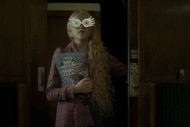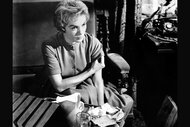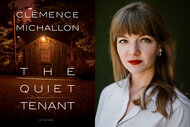Create a free profile to get unlimited access to exclusive videos, sweepstakes, and more!
Report shows bias in how female writers are covered

Plenty of focus has been paid to representation when it comes to the creators of work across mediums, but when it comes to women in literature specifically, a new study shows how the authors are treated in the coverage and promotion of their work.
As reported by The Guardian, The Emilia Report is named after the first published female poet in England, Emilia Bassano. Playwright Morgan Lloyd Malcolm wrote a play about the woman who she believes would’ve had a longer career if there had been gender equality during her career.
“I am convinced that had women been equal to men of the time, we would have a body of work to remember her by. Instead, the vast majority of her work has probably been lost,” Lloyd Malcolm told The Guardian.
The most recent Emilia Report compared the coverage that ten male and female authors received in their perspective markets. Results concluded that the men received 56% of review coverage and in individual cases, many more mentions in general across various types of pieces.
In addition to the works by female writers being reviewed and mentioned less, the report also noted how the women were covered. For instance, the mention of their ages was more prevalent. Author Joanne Harris, whose most recent book was compared to Neil Gaiman’s for the study, said the way her novel was treated was noticeably different.
"In general, when you compare the coverage of my work to that of men writing in similar areas, the emphasis in my case has been on the domestic, and in theirs on the academic,” Harris said. “Women are still viewed as a niche group, dealing solely with women’s issues, whereas men (even in the same area) are thought of as dealing with important, universal themes.”
Danuta Kean authored the report and believes that these discrepancies contribute to the gap in wages between male and female authors.
“The difficulties they face in receiving review coverage within the flood of fiction hitting the market makes it harder for them to sustain an income, and ultimately a career, as a professional writer. It goes some way to explain the 25% gap between the average earnings of men and women writers,” Kean said.
As we all know, these systemic issues aren't easy to fix. But knowing the problem exists is an important weapon in the battle for equality.


























